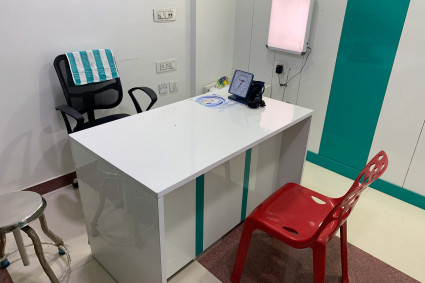Undergoing a hair transplant is a significant step towards regaining confidence and achieving a natural, fuller head of hair. However, the journey to optimal results continues after the surgery itself. Post-hair transplant care is a crucial aspect of the process, ensuring that your newly transplanted hair grafts thrive and contribute to a seamless, successful outcome. This comprehensive guide will explore a detailed roadmap for taking good care after a hair transplant surgery, covering everything from immediate recovery to long-term maintenance.
Section 1: Immediate Post-Operative Care
- 1.1 Follow Your Surgeon's Instructions
The first and foremost rule of post-hair transplant care is to adhere diligently to your surgeon's instructions. Your surgeon will provide a customized set of guidelines based on the specific details of your procedure and your unique medical history. This may include information on medications, washing routines, and activities to avoid during the initial days following the surgery.
- 1.2 Managing Discomfort and Pain
It's normal to experience discomfort and mild pain after a hair transplant. Your surgeon will prescribe pain medications to help manage this. Follow the prescribed dosage and inform your surgeon if you experience any unusual side effects.
- 1.3 Protecting the Transplanted Area
Protect the transplanted area from direct sunlight, wind, and dust during the initial days post-surgery. Wear a hat or use a wide-brimmed hat to shield your scalp. Your surgeon may also provide a specialized cap or bandana for additional protection.
- 1.4 Avoiding Strenuous Activities
During the first week or two, avoiding strenuous activities can elevate your heart rate and blood pressure is crucial. These activities may include heavy lifting, vigorous exercises, or activities that cause excessive sweating. Following this precaution helps minimize the risk of dislodging grafts.
Section 2: Proper Hair Washing Techniques
- 2.1 Gentle Cleansing
Your surgeon will provide specific instructions on when and how to start washing your hair after the transplant. Typically, this involves a gradual introduction of gentle washing techniques. Use a mild, sulfate-free shampoo and follow the recommended washing frequency.
- 2.2 Pat Dry, Don't Rub
After washing your hair, pat it dry with a soft towel instead of rubbing. Vigorous rubbing can lead to friction and potentially dislodge grafts. Gently press the towel against your scalp to absorb excess water.
- 2.3 Avoid Hot Water
During the initial weeks, lukewarm or cool water should be used to wash your hair. Hot water can irritate the scalp and may interfere with the healing process.
- 2.4 Be Mindful of Product Use
Limit styling products, especially those containing harsh chemicals, in the initial weeks post-transplant. If your surgeon recommends specific post-operative products, follow their advice for the best results.
Section 3: Scalp Care and Hygiene
- 3.1 Scalp Massages
Gentle scalp massages can improve blood circulation and promote healing. However, avoid direct manipulation of the transplanted area. Consult your surgeon for specific guidance on incorporating scalp massages into your post-operative care routine.
- 3.2 Hair Trimming
Regular hair trims, especially in the donor area, can help maintain a neat appearance and aid in healing. Your surgeon may schedule follow-up appointments for necessary trims or provide guidance on when you can visit your regular hairstylist.
- 3.3 Sleeping Position
During the initial weeks, try to sleep with your head elevated to minimize swelling. Your surgeon may recommend using a travel pillow to provide additional support and avoid putting direct pressure on the transplanted area.
Section 4: Nutrition and Hydration
- 4.1 Stay Hydrated
Proper hydration is essential for overall well-being and supports the healing process. Drink an adequate amount of water daily to ensure your body, including your newly transplanted grafts, receives the necessary nutrients.
- 4.2 Balanced Diet
A well-balanced diet rich in vitamins and minerals is crucial for optimal healing and hair growth. Incorporate foods containing biotin, vitamin E, and protein into your diet to promote strong, healthy hair.
- 4.3 Nutritional Supplements
If advised by your surgeon, consider taking nutritional supplements that support hair health. Biotin supplements, in particular, are known to aid in hair growth and strength.
Section 5: Long-Term Maintenance
- 5.1 Protecting Against Sun Exposure
Even after the initial post-operative period, protecting your scalp from prolonged sun exposure is essential. Use sunscreen, wear a hat, or choose hairstyles that provide coverage to prevent sun damage.
- 5.2 Gradual Resumption of Activities
Gradually resume your normal activities, including exercise and outdoor pursuits, following your surgeon's guidance. Introduce activities slowly to prevent any strain on the healing grafts.
- 5.3 Regular Check-ups
Schedule regular follow-up appointments with your surgeon to monitor your progress. These check-ups allow your surgeon to assess the growth and health of your transplanted hair and address any concerns you may have.
In The End,
In the pursuit of restoring a full and natural head of hair through hair transplant surgery for men, the post-operative care phase is a pivotal chapter in the journey. Adhering diligently to the prescribed guidelines ensures the success and longevity of the procedure. As the immediate recovery period requires cautious measures such as protecting the transplanted area from sunlight and avoiding strenuous activities, it sets the foundation for a smooth healing process.




